Rule number one: boots first, then bindings! The right snowboard gear must match and fit perfectly, so don't underestimate its selection and follow a few important steps.

Choosing the right bindings depends on several different factors. The hardness of the bindings, size, type, material, and, of course, your budget are all important. We have a simple guide to help you make the best choice. But if you're still unsure, stop by our store in Brno. We'll discuss it together and recommend the best bindings tailored to your needs.
Boots First
Bindings should fit the size of your boots. That's rule number one. If you're choosing bindings in a store, it's best to bring your boots with you and try them on to see how they fit. The straps of the bindings should fit snugly around your boots. The easiest option is to combine bindings and boots from the same brand. These models are designed to fit together automatically.
Soft or Hard Bindings?
Choose the hardness of your snowboard and bindings according to your riding style. Softer bindings are more playful and suitable for both beginner riders and freestyle. We recommend choosing slightly harder bindings if you prefer hard carving on the slopes or freeriding.
Types of Bindings
The binding fastening method determines the basic characteristics of the binding: how easy it will be to step into it, how long it will take to fasten, and how you will feel when riding and connecting with the board.
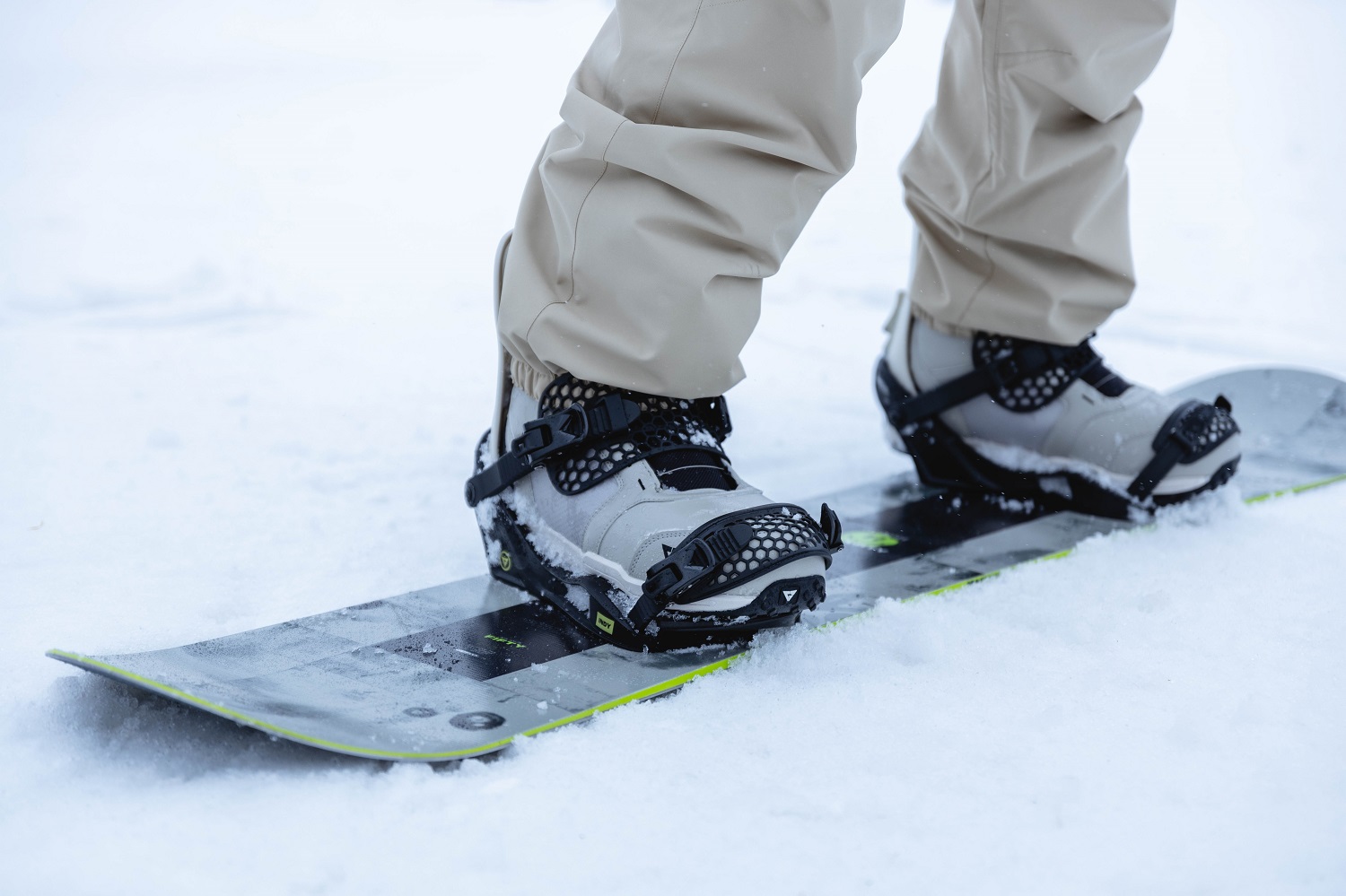
Strap bindings consist of a baseplate, a heel cup, and straps. The lower strap can be fastened over the toe or over the instep, but it is always necessary to use both hands and fasten both parts of the strap together.
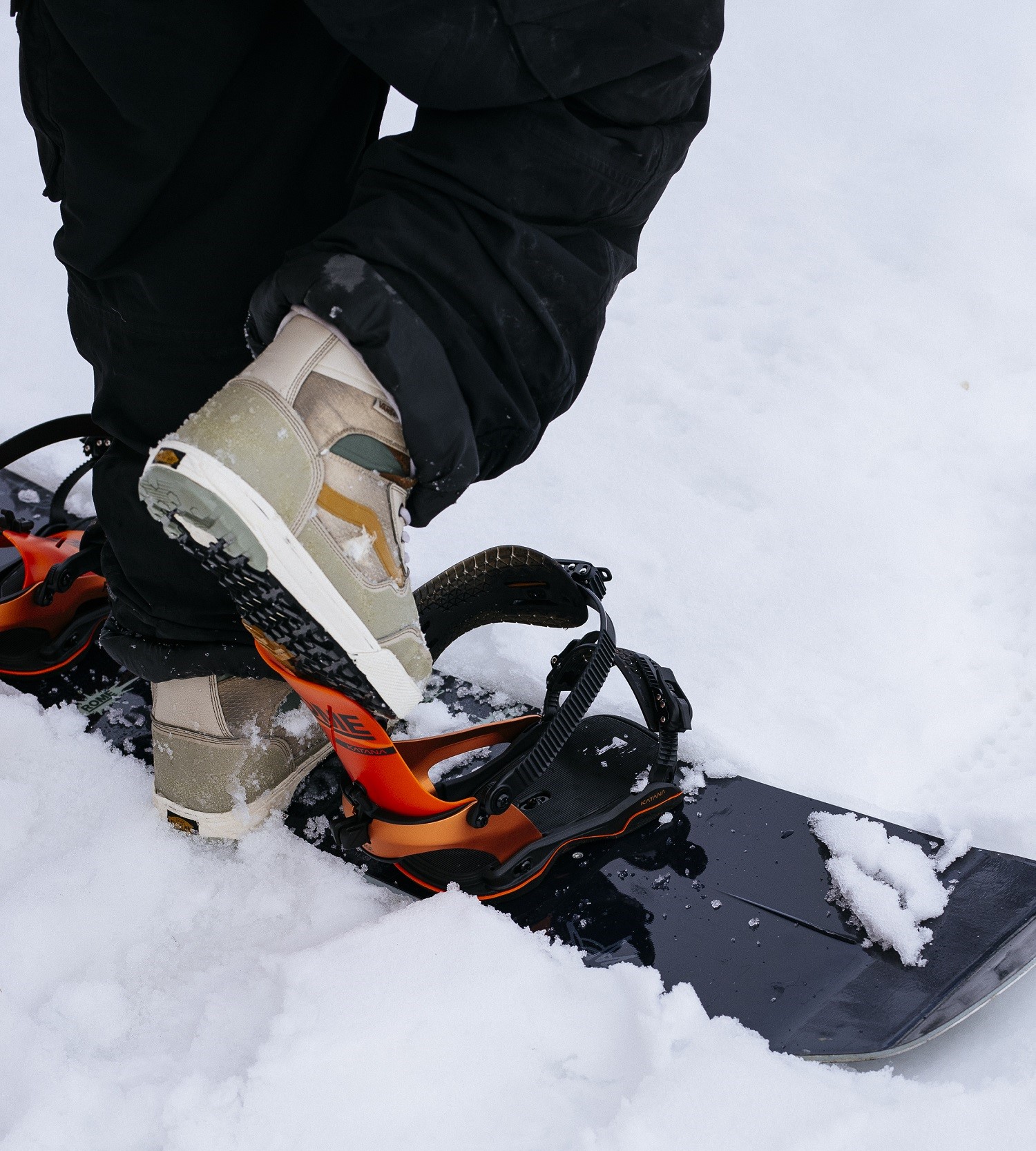
Classic-lovers will appreciate the smart and simple FASE technology, which makes it easier and faster to step in, while offering the same riding experience and no extra weight or bulk compared to two-strap bindings.
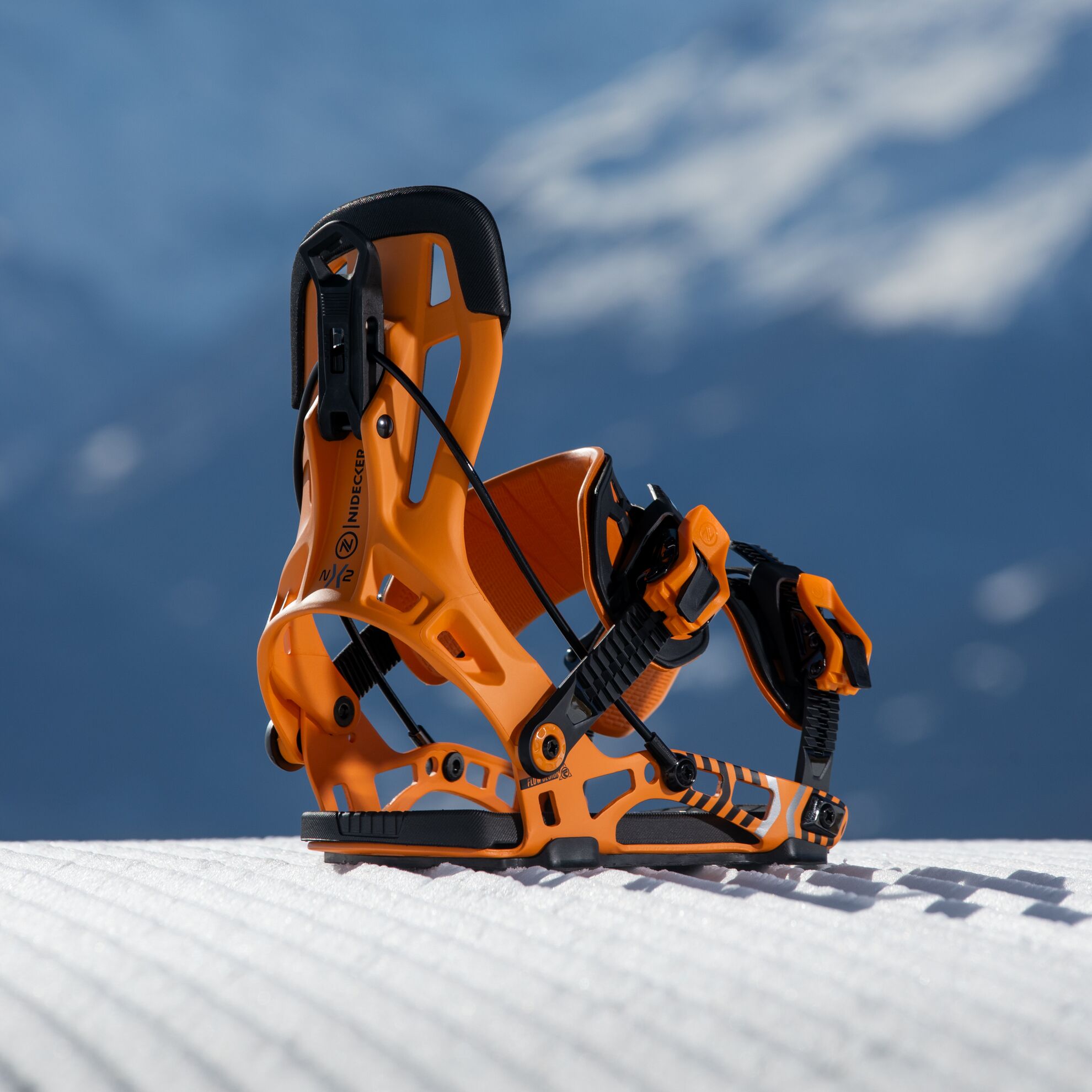
At the beginning of the season, you set the straps and then don't have to worry about them anymore. You step into the binding through the heel, which you simply click into place, making it a much faster way to put on your boots compared to two-strap bindings.
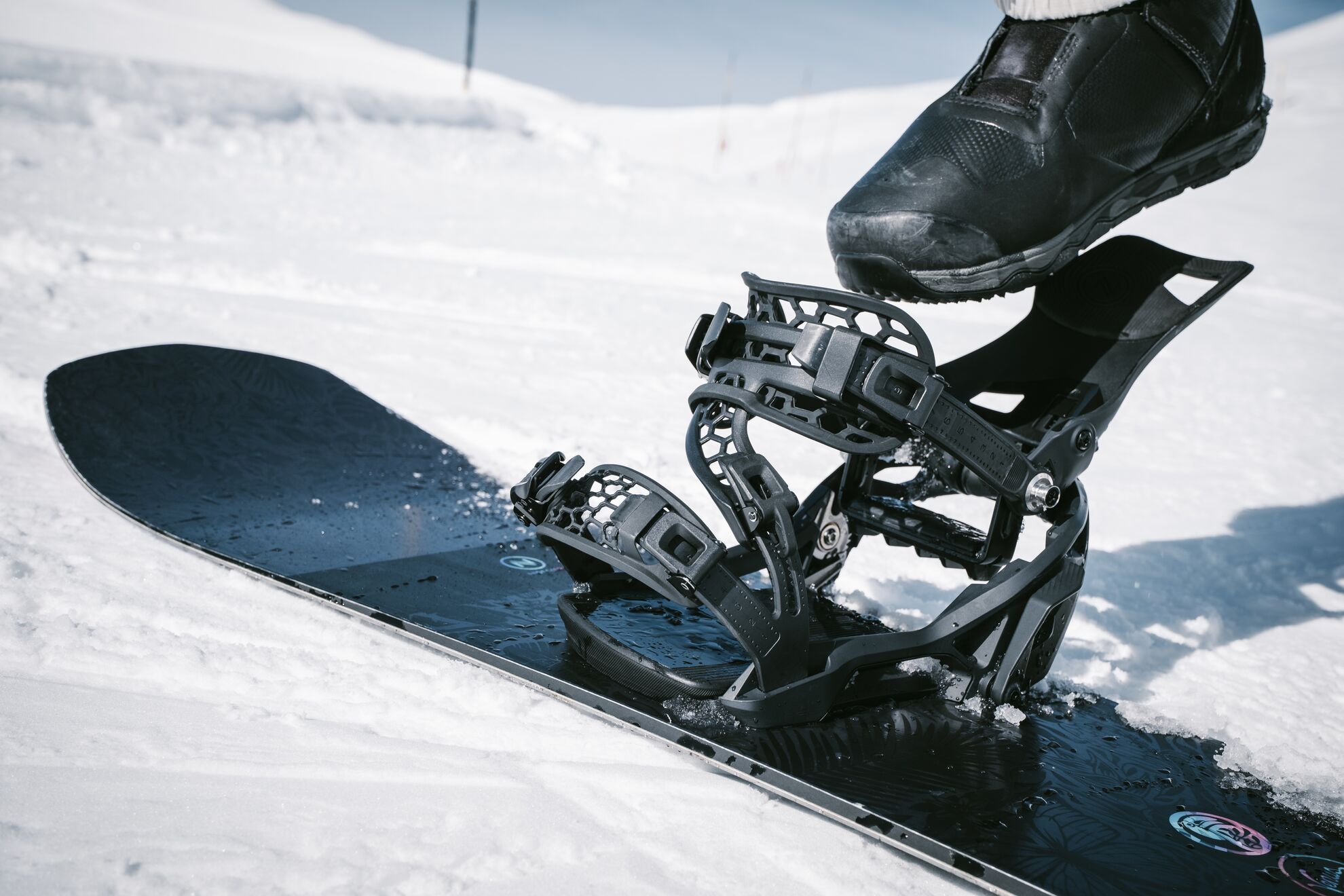
The Nidecker Supermatic is a revolutionary, fully automatic binding that retains the two-strap feel and works with all snowboard boots. Getting into the Supermatic requires no use of your hands at all.
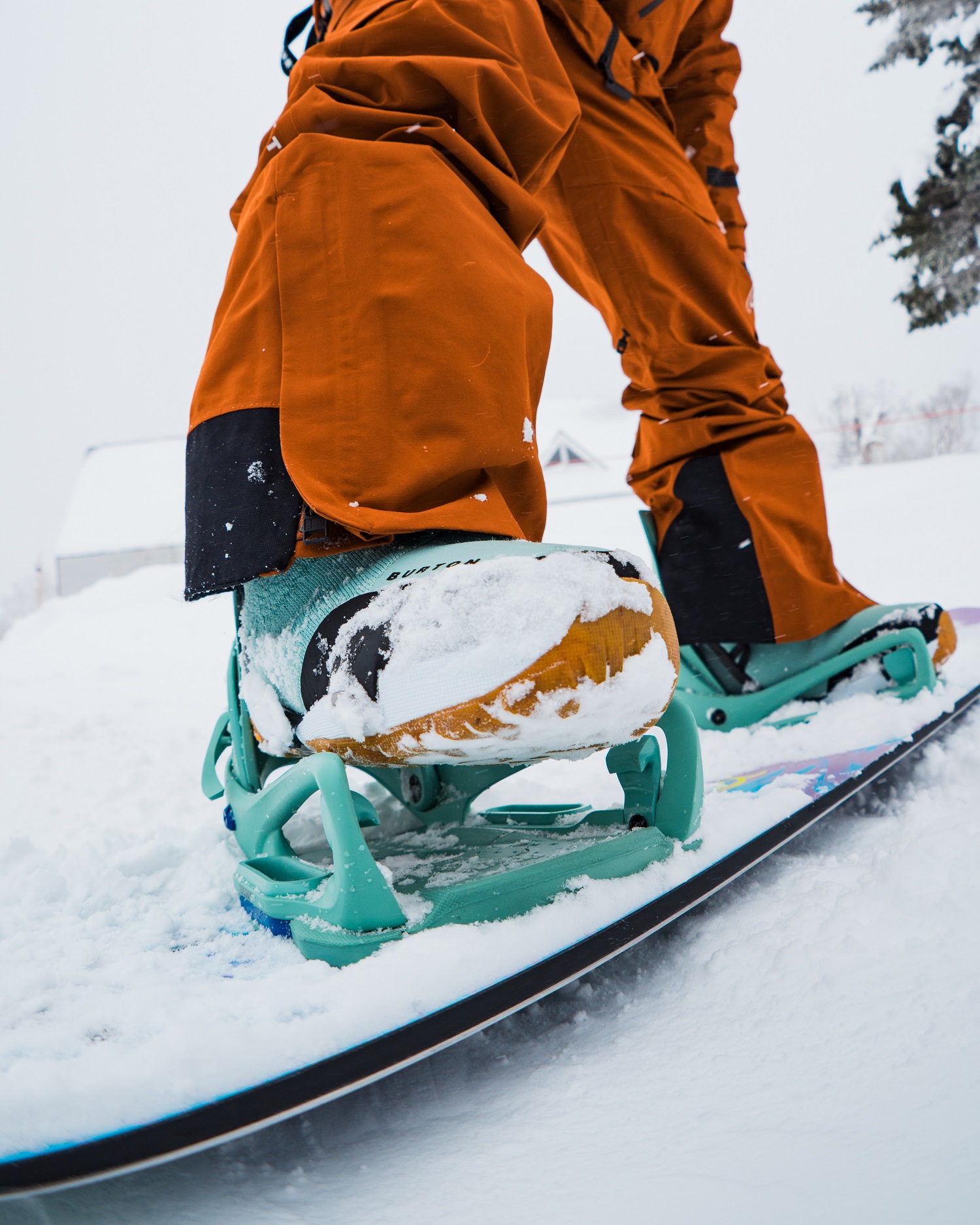
The Step On system also offers similarly easy entry without bending over and sitting in the snow. It works exclusively with compatible boots, but its advantages include low weight and simplicity. Just step in and go.
Which Foot is in Front?
Advanced snowboarders have long known which foot should be in front and which behind. But if you're a complete beginner who has never stood on a board before, there's a simple trick to find out. Try running a short distance outside and jumping as far as you can. Did it work? Which foot pushed off the ground? That's the foot that should be on the snowboard first.
If you still don't know, ask a friend or family member to stand behind you and gently push you forward unexpectedly. The foot you push off with first is the one that will be on the board first.
What Angles to Choose When Mounting Bindings
And while we're on the subject of binding direction, it's important to keep in mind the angle at which to attach the bindings. Whether you prefer downhill skiing or jumping on rails, you'll be comfortable riding at 15° and -9°.
Overlap of the Binding Baseplate over the Snowboard Edge
Once you have successfully screwed on the bindings and are happy with the angle and stance, there is just one last important detail to check. The bindings (including boots) must not overlap more at the heel than at the toe (or vice versa). An unbalanced binding position can cause problems when riding – in short, your boots and bindings will constantly catch on the snow. And that really spoils the impression of a perfect ride!






























